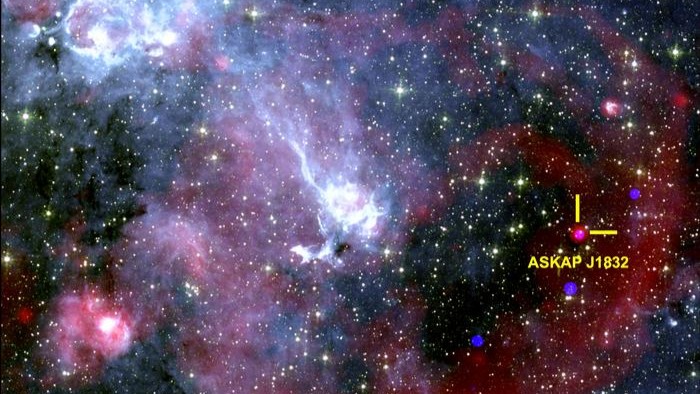'Unlike anything we have seen before': Astronomers discover mysterious object firing strange signals at Earth every 44 minutes
ASKAP J1832-0911, which is periodically throwing out pulses of radio waves and X-rays, could be a brand-new cosmic object.

Astronomers have discovered a mysterious object flashing strange signals from deep space, and they have no idea what it is.
The object, named ASKAP J1832-0911, spits out pulses of radio waves and X-rays for two minutes straight, once every 44 minutes.
Detected by Australian Square Kilometre Array Pathfinder (ASKAP) and NASA's Chandra X-ray observatory, the strange repeating signals are currently unexplained — and unravelling this cosmic mystery could reveal new physics, according to the researchers who discovered it. The team published their findings May 28 in the journal Nature.
"This object is unlike anything we have seen before," lead study author Andy Wang, an astronomer at Curtin University in Perth, Australia, said in a statement. "ASKAP J1831-0911 could be a magnetar (the core of a dead star with powerful magnetic fields), or it could be a pair of stars in a binary system where one of the two is a highly magnetised white dwarf (a low-mass star at the end of its evolution)."
"However, even those theories do not fully explain what we are observing," Wang added. "This discovery could indicate a new type of physics or new models of stellar evolution."
ASKAP J1832-0911 is a long-period transient (LPT), a class of rare and extreme astrophysical events that sweep out beams of radio waves like cosmic lighthouses. First discovered in 2022, thus far ten LPTs have been catalogued by astronomers.
Related: 'Cosmic cannonballs' exploding out of dead star could explain mysterious flicker in the night sky
Get the world’s most fascinating discoveries delivered straight to your inbox.
Unlike traditional pulsars, which are produced by neutron stars and spit out radio signals every few seconds or milliseconds, LPTs emit pulses at intervals of minutes or hours apart — a period previously thought to be impossible. This has made the cause of the signals, and how they are able to switch on and off at long and regular intervals, a mystery among astronomers.
After discovering the signals using the ASKAP telescope, the researchers turned to the Chandra X-ray observatory (which was coincidentally pointing at the same patch of sky) to double check what they had found. Chandra's observations confirmed ASKAP J1832-0911's presence, while also making the first-ever detection of an LPT in X-rays.
"Discovering that ASKAP J1832-0911 was emitting X-rays felt like finding a needle in a haystack," Wang said. "The ASKAP radio telescope has a wide field view of the night sky, while Chandra observes only a fraction of it. So, it was fortunate that Chandra observed the same area of the night sky at the same time."
The astronomers believe that the detection of an LPT emitting radio waves and X-rays simultaneously could offer them a valuable clue as to what's producing them, as any theory that explains the object must now account for both types of emission.
To assemble more of the puzzle, the researchers suggest that more detections using radio and X-ray telescope pairs should be made.
"Finding one such object hints at the existence of many more," second author Nanda Rea, an astrophysicist at the Catalan Institute for Space Studies in Spain, said in the statement. "The discovery of its transient X-ray emission opens fresh insights into their mysterious nature."

Ben Turner is a U.K. based writer and editor at Live Science. He covers physics and astronomy, tech and climate change. He graduated from University College London with a degree in particle physics before training as a journalist. When he's not writing, Ben enjoys reading literature, playing the guitar and embarrassing himself with chess.
You must confirm your public display name before commenting
Please logout and then login again, you will then be prompted to enter your display name.
